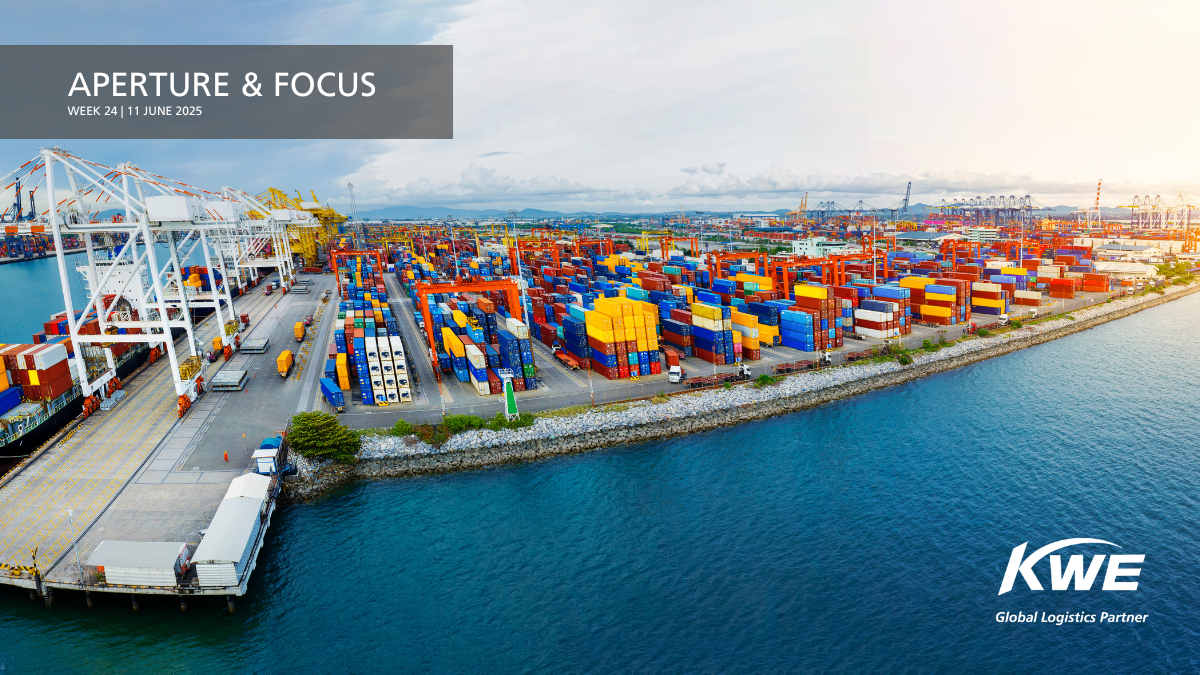Quote
Aperture & Focus 2025: Week 24

Global Aperture
The World Bank has projected a significant slowdown in global economic growth for 2025. In its latest report, the Bank forecasts global GDP growth to decelerate to 2.3% in 2025, marking the weakest pace since 2008, excluding recession years. The primary factors the entity cites as contributing to this downturn include escalating trade tensions which have led to increased tariffs and retaliatory measures, disrupted global trade flows, increased business uncertainty, and dampened investment.
Likewise, the Organization for Economic Co-operation and Development (OECD) has revised its U.S. economic growth forecast for 2025, projecting a slowdown to 1.6%, down from a previous forecast of 2.2% for 2025, with projections that it will remain the same in 2026. In its latest report, the OECD projects global GDP growth to decline from 3.3% in 2024 to 2.9% in 2025 and 2026. This downward adjustment reflects concerns over escalating trade tensions, particularly due to U.S. tariffs, and increased policy uncertainty affecting investment and household spending
Global airfreight demand rose 6% year-on-year in May, driven by emergency shipments following the temporary US–China tariff pause, while available capacity dropped by 2%. Still, the market outlook remains cautious due to ongoing trade uncertainty and slower market trends.
Widebody freighter capacity on the transpacific trade lane has stabilized between 60,000–65,000 tons per week after fluctuating sharply due to recent U.S. tariff changes and the end of de minimis exemptions for Chinese e-commerce. While capacity remains 19.5% below its March peak, recent demand recovery has prompted carriers to gradually reintroduce space across key lanes, with some shifts also seen on Asia–Europe and Latin America–North America routes.
Regional Focus
Americas
United States: The U.S. and China have reached a tentative deal to ease trade tensions, potentially resolving issues over rare earth minerals and magnets. Commerce Secretary Howard Lutnick said the plan will be presented to Presidents Trump and Xi for approval after two days of talks in London.
The Consumer Price Index (CPI) for May 2025 showed a 0.2% increase overall, with the core CPI—excluding food and energy—rising by 0.3%, marking the highest monthly gain in four months. This uptick in inflation is attributed to sustained high tariffs from ongoing trade wars, which have begun to impact the prices of various goods, contributing to underlying inflation. The core CPI year-over-year reached 2.9%, up from 2.8% in April.
U.S. import cargo volumes are expected to rise this summer as retailers expedite shipments to take advantage of temporarily reduced tariffs on Chinese goods ahead of the August 12th tariff extension deadline, creating an early peak season coinciding with back-to-school and holiday preparations. However, uncertainty around future tariff levels and potential declines in late-year volumes are prompting industry calls for continued trade negotiations to stabilize supply chain planning.
In May, U.S. rail freight showed mixed signals—carloads rose 5.9% year-over-year across key industrial sectors, while intermodal traffic grew just 0.6%, reflecting weaker import volumes and cautious consumer demand. Broader economic indicators, including stagnant manufacturing and modest consumer spending, suggest continued uncertainty for the rail industry heading into the second half of 2025.
Mexico: Mexico’s air cargo sector saw a 7% decline in international volumes during the first four months of 2025 due to new U.S. tariffs, tighter security protocols, and operational shifts caused by the freighter ban at Mexico City’s main airport. Despite these challenges, e-commerce growth, particularly from Asia, is fueling continued investment and strategic expansion in the country’s air logistics infrastructure.
Asia-Pacific
According to the air cargo analysis on 2024 published by IATA, Asia-Pacific led the global air cargo market with 34.2% of total global cargo measured in cargo tonne-kilometres, driven by strong semiconductor exports, booming e-commerce, and modal shifts from sea to air. As one of the fastest growing airport’s in Southeast Asia, Singapore’s Changi Airport is expanding its capacity to over 5.4 million tons with new infrastructure, positioning itself as a key hub amid Southeast Asia’s rapid economic growth and rising demand for special cargo.
India: On June 10th, an explosion and fire broke out aboard the Singapore-flagged MV Wan Hai 503 off the coast of Kerala, India, prompting a major rescue and firefighting operation as four crew members remain missing. The incident has disrupted regional shipping operations, with ongoing efforts to contain the fire and ensure safety causing delays and increased caution in nearby maritime traffic.
China: Container shipping activity from China to the U.S. rose 9% in early June, signaling a potential second wave of inventory frontloading as retailers take advantage of the temporary U.S.–China tariff pause. While volumes remain below last year, the uptick suggests retailers are preparing for the back-to-school and holiday seasons amid ongoing trade uncertainty.
Europe, Middle East & Africa
Airlines operating in the EMEA region are facing rising operational and financial pressures due to expanding conflict zones, GPS jamming, drone threats, and sudden airspace closures across areas like Russia, Ukraine, the Middle East, and Africa. These disruptions are forcing carriers to reroute flights at high cost, straining predictability and prompting increased investment in security planning and risk intelligence.
Red Sea shipping traffic has increased by 60% to 36–37 ships daily since August 2024 after a ceasefire reduced Houthi attacks, but volumes remain below the pre-conflict average of 72–75 ships per day. Despite improved security, limited naval escort capacity causes delays of up to a week for vessels seeking protection, as the EU naval mission currently operates only 2–3 ships and has requested 10 more to increase coverage.